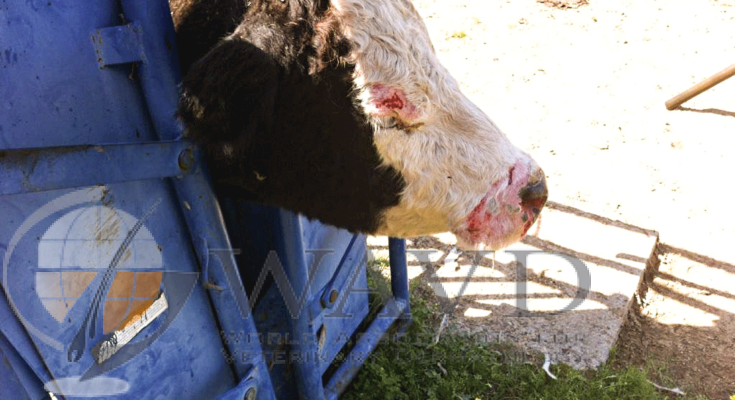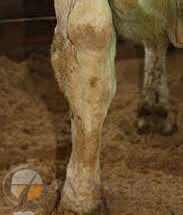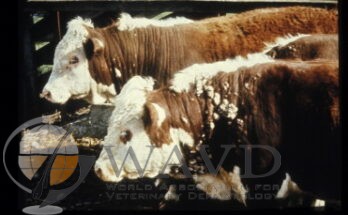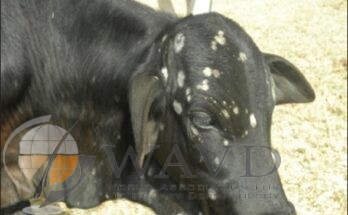Photosensitization is a serious skin condition in horses and cattle caused by a hazardous combination of certain plants and ultraviolet (UV) light. Certain plants contain photodynamic agents, which then cause a reaction in the animal’s body that leads to ultra-sensitive skin. This condition is specific to lightly or non- pigmented animals or areas of an animal that have less hair. Severe skin damage can result and include ulceration, necrosis, and edema.
Photosensitization is generally classified by the source of the photodynamic agent. The three typical classifications are:
- Primary Photosensitization (Type I): Occurs when a photodynamic agent is injected, ingested, or absorbed in the skin. Once an agent enters the systemic circulation and is exposed to UV light, damage to the skin’s cell membrane occurs.
- Aberrant Pigment Metabolism (Type II): Syndrome in which autogenous pigments are photosensitizing porphyrin agents. This syndrome is a congenital defect. (uroporphyrin I, coproporphyrin I, protoporphyrin III)
- Secondary (Hepatogenous) Photosensitization (Type III): Most common form observed in livestock. Occurs when an animal ingests plants that contain phylloerythrin. If the animal has liver damage, phylloerythrin will not be excreted into the animal’s bile and will eventually be circulated. When phylloerythrin reaches the skin, it will initiate a photoxic reaction, causing severe skin burns and sloughing.




